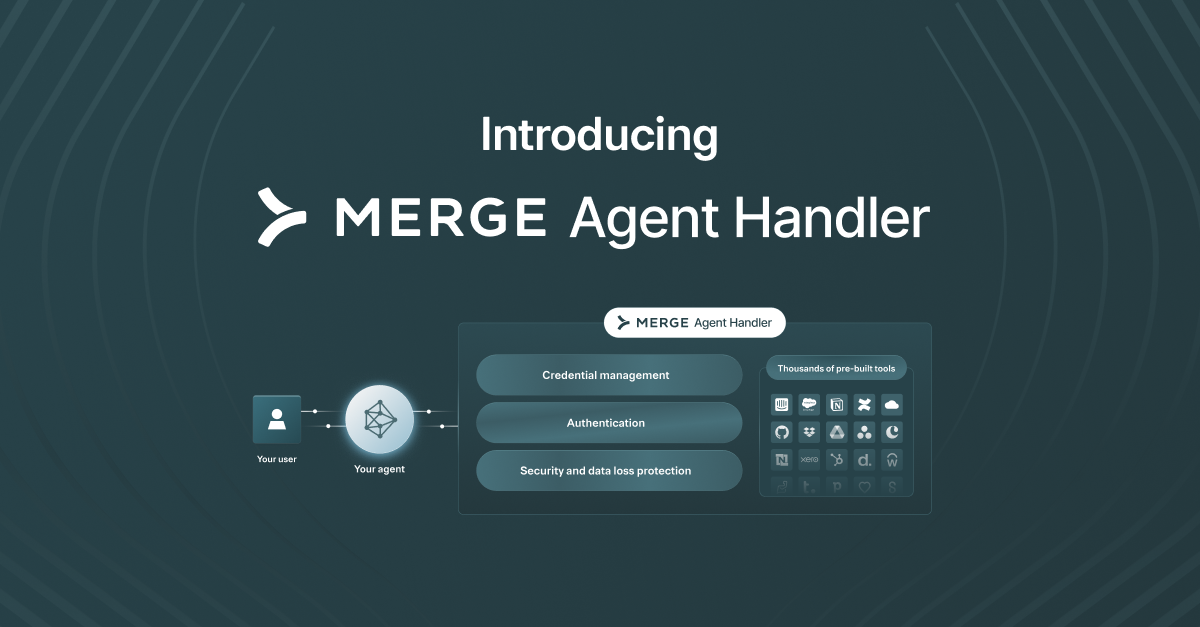What is workflow integration? Here's everything you need to know

As you look to build integrations between your internal applications or between your product and clients’ apps, you likely have to make several difficult decisions.
This includes everything from the integrations that should be prioritized to the tooling you should use.
To help you make the right decisions over time, we’ll break down examples of impactful workflow integrations, the tooling you can use to implement and maintain them, and more. But to get us started, let’s align on the definition of workflow integration.
Workflow integration definition
It’s the process of connecting applications, typically through their APIs, with the goal of syncing specific data between them.
These integrations can either be between the applications your team uses internally or between your product and the 3rd-party applications your prospects and/or clients use.

Related: Definition of software integration
Examples of workflow integration
Let’s break down a few examples of internal and customer-facing workflow integrations.
Store important employee documents in your file storage system automatically
Your HRIS solution (e.g., Workday) likely collects a variety of important employee documents over time, from signed offer letters to performance reviews to completed training certifications to termination notices.
To help you store these documents in your file storage system (e.g., Box) so that they’re kept secure and accessible over time, you can integrate your HRIS with your file storage system and build a sync where any time a document is added or modified in the HRIS, the corresponding changes take place in your file storage application.

Share leads with reps in your business communications platform in near real-time
Research shows that the sooner you respond to a lead, the better your chances are of converting them into a client.
To help facilitate a fast “speed-to-lead”, you can integrate your CRM (e.g., Salesforce) with you business communications platform (e.g., Slack) and build a workflow where once a lead is added in the former, a notification automatically gets delivered to the assigned rep in Slack.
The notification can include key details on the lead, such as their full name, job title, employer, reason for submitting the demo request, etc.—ensuring your reps have the context they need to follow-up effectively.

Related: Examples of API integration
Add the candidates your product recommends to clients’ ATS solutions
Say you offer a product that uses a machine learning algorithm to identify and recommend candidates for specific roles.
To help your clients add candidates to their ATS solutions with ease—so that their recruiters can follow-up with them quickly—you can integrate your product with the ATS solutions your clients use and build the following workflow: Once a client approves a candidate in your application, that candidate is automatically created in the client’s ATS. In addition, specific fields are synced over, such as the candidate’s current role, employer, Linkedin profile URL, to help the assigned recruiter reach out confidently and thoughtfully.

Provide intelligent recommendations to clients for improving reps’ productivity
Now let’s imagine that you provide a sales automation solution that—like the previous example—uses a machine learning algorithm to help clients identify ways to make their sales reps more effective.
To help your machine learning algorithm pinpoint meaningful trends that lead to valuable, timely, and personalized recommendations for clients, you can integrate with clients’ CRM systems. Once connected, you can collect data on each rep’s opportunity, from the contacts at these accounts to the activities the rep performs.

Benefits of workflow integration
Let’s break down the benefits of implementing both internal and customer-facing workflow integrations.
Enhances the employee experience
By minimizing manual data entry and allowing employees to access information in the applications they’re already using, they’re able to avoid countless hours of tedious work. This not only helps them improve their work-life balance but it also allows them to dedicate more time towards the work they actually enjoy.
Improves key business metrics
By allowing employees to spend more time on work they value and, as a result, increasing their level of engagement, your organization is also set to benefit.
According to Gallup, engaged employees are likely to be more productive, stay at your company for a longer period, behave more ethically, and even drive higher profits for your business.
Prevents human errors
Data entry isn’t just tedious and unpleasant to perform; it can also lead to mistakes that have significant downstream consequences. For instance, a recruiter can accidentally input the wrong salary and job title in a candidate’s offer letter, leading that candidate to get upset and move forward with another opportunity.
Since workflow integrations streamline a significant share of data entry tasks, your team can—by and large— avoid making mistakes like the one above and dealing with their ramifications.
Related: Benefits of API integrations
Elevates your close rate
By offering the integrations your prospects want, you’re—all else equal—more likely to win their business. Our research from our State of Product Integrations report validates this; nearly 3 in 5 companies that offer customer-facing integrations can correlate improving their close rate for new business with their integrations.

Which leads us to the other benefits of offering product integrations…
Bolsters your customer retention rate
As our examples showed, customer-facing integrations can enhance your product’s value in a range of ways, whether that’s improving your machine learning and AI capabilities or simply allowing clients to access the data they need, when and where they need it.
This additional value should improve customer satisfaction and, in turn, customer retention. It might even lead to more upsell and cross-sell opportunities.
Lets you expand to new markets more easily
Companies across sizes and in specific industries and regions tend to use a specific set of applications for a given category of software. For instance, you might find that prospects in Europe use certain ATS solutions that barely overlap with your prospects based out of North America.
If you can offer integrations with the ATS solutions your target market values, you'll be more likely to achieve product parity with incumbent rivals—or even surpass the appeal of their products in that market—and gain traction.
Drawbacks of workflow integration
Workflow integrations also aren’t without their issues. Here are a few to be aware of:
Difficult to scale
We’ll dive deeper on the specific solutions you can use to build workflow integrations, but most of your options will inevitably require significant internal resources.
For each integration, your engineers will likely need to be involved both during the initial build and for ongoing maintenance. This means that scaling your integrations can prove difficult and may not be worth the steep opportunity cost of assigning more engineers to integration-related work.
Performance issues
In many cases, your integrations can break or perform poorly for reasons that are out of your team’s control.
In the case of API integrations, for example, certain endpoints can get deprecated without your knowledge; providers may release new versions of APIs that aren’t backwards compatible; API providers might experience downtime, etc.
Regardless of the cause, these issues can hurt your employees’ productivity, your customer experience, and, eventually, your bottom-line.
Security risks
If your integrations aren’t properly secured (and even when they are), they can be vulnerable to risks that hurt your employees, clients, prospects, and your businesses’ reputation.
A malicious actor can intercept highly-sensitive data while it’s getting transmitted; they can retrieve your authentication credentials and make API calls themselves; they can exploit security gaps in the 3rd-party APIs and access your personal identifiable information (PII)—and so on.
Types of workflow integrations
You typically have a few methods to choose from. Let’s break down each along with their respective pros and cons.
- API integrations allow you to connect applications and sync data using API endpoints. This approach is generally the most reliable and high performing, as data can be synced frequently (e.g., every minute). That said, some applications don’t offer APIs or the endpoints you need, so this method isn’t always an option.
- Flat file integrations let you use the data stored in flat files to sync data. More specifically, a flat file in one system would be exported, transformed (to match the data model of the destination system) and imported to another system, which would process the data.
A clear benefit of this approach is that most systems can export and import flat files, so it’s almost always an option. However, this method makes it difficult, if not impossible, to sync data at the frequency you need. So, depending on your integration requirements, it might not be your best option.

- Screen scraping involves using scripts (otherwise referred to as “spiders” or "crawlers”) to copy information on one page or application and paste it into another. Like flat file integrations, screen scraping can almost always be used. They can also be modified since they aren’t hard coded, making them somewhat flexible (although you’ll need an engineer to carry out this work). However, screen scraping-based integrations can break fairly easily—since websites and applications often change—so they’ll require significant maintenance over time.
How to integrate workflows
The steps to building workflow integrations naturally vary depending on the type of workflow integration you’re looking to build.
That said, here are some high level steps to guide your team:
Align on the integration’s business goals
Understanding the integration’s goals can help your team make critical decisions. For instance, by knowing that data needs to be synced in, or near, real-time, you can better determine which integration method to use. And by understanding which stakeholders need to access the integrated data, you can pinpoint the applications that need to be involved in the build and the colleagues that need to be looped in during the implementation process.
Perform extensive testing to ensure the integration performs up to par before going live
Your integrations can break for a seemingly endless number of reasons, so it’s worth investing in tests that can expose all of your integrations' potential vulnerabilities.
This includes scale testing to see if the integration can handle a high volume of data without any degradation in performance; load testing to pressure test the integration’s ability to run concurrent requests; authentication and authorization testing to validate the integration’s authentication method, and so on.

Document the integration and update the documentation over time
It’s easy for developers to forget how an integration is built and why it’s built the way it is. They also might not have ever known if they just got assigned to the integration or are relatively new to it.
Having a single, accessible document that outlines key facets of an integration can ensure that key information doesn’t get lost and that any engineer is able to get up to speed on the integration relatively quickly.
Workflow integration tools
Assuming you decide to outsource your integrations, you’ll likely look at specific sets of tools for internal and customer-facing integrations.
Tools for internal workflow integrations
You might find yourself choosing between an integration platform as a service (iPaaS), an integration software as a service (iSaaS), and a robotic process automation software (RPA).
The first two approaches allow you to build and maintain integrations at the API-level, which ensures that the integrations are reliable and performant. That said, these platforms can be technically complex, which can force your engineers to manage them. And, given their complexity and their unique UX, your engineers might take a while to get onboarded to them (this is especially true for an iPaaS).
An RPA solution, which allows you to build and manage software scripts (i.e. “bots”), enables you to integrate applications at the user interface-level. This allows you to connect to a wider array of applications—as not all of them offer APIs or the endpoints you need. However, the platform is also technically complex to use, and its integrations can be fairly brittle, which leads them to require significant maintenance over time.
Tools for customer-facing workflow integrations
When it comes to build and maintaining product integrations, you’ll likely decide between an embedded iPaaS—which is an iPaaS that can be bolted onto your product in a variety of ways—and a universal, or unified, API solution, which, which lets you build to a single API to access a whole category of integrations.

An embedded iPaaS—like an iPaaS—requires technical expertise to use. The platform also forces you to build one integration at a time. Taken together, the platform makes it extremely difficult to scale your integration builds. In addition, while the platform offers some management features, these usually fall short of what your team needs to diagnose and resolve integration issues quickly and easily.
A unified API solution, on the other hand, makes it easy to scale your integrations, as a single integration build can lead you to offer hundreds of integrations to clients across key software categories.
Moreover, through Merge, the leading unified API solution, you can provide reliable and easy-to-manage integrations through our integration maintenance support and Integration Observability features.
You can learn more about Merge by scheduling a demo with one of our integration experts.
Workflow integration FAQ
In case you have any more questions on workflow integrations, we’ve addressed several additional ones below.
What is the difference between a workflow and workflow integration?
While they appear nearly identical, they refer to completely different concepts.
A workflow refers to a specific series of steps that take place across applications, employees, and (potentially) companies. They’re typically associated with a strategic business aim, such as responding to leads quickly or purchasing equipment for incoming employees on time.
Workflow integration, on the other hand, involves connecting applications via APIs to help facilitate seamless data exchanges between them.
What is the difference between workflow integration and workflow automation?
Workflow integration is focused on connecting applications in order to sync specific types of data across systems; workflow automation involves streamlining a specific workflow end-to-end such that there’s minimal, if any, human intervention.
Both workflow integration and automation can be implemented through in-house engineers or with specific 3rd-party integration or automation tools. Moreover, in some cases, the tools that let you build workflow integrations and automations overlap, such as an iPaaS, but more often than not, these tools specialize in a specific form of workflow integration or automation (e.g., customer-facing workflow integrations).
What are some common workflow integration tools?
The tools you come across will vary depending on whether you’re looking to implement internal or customer-facing workflow integrations.
For internal integrations, you'll likely uncover iPaaS solutions like Workato, Boomi, Tray.io, and Mulesoft. And if you look at RPA vendors, you'll probably come across platforms like Automation Anywhere, UiPath, and Blue Prism.
In the case of customer-facing integrations, you'll find that Paragon, Cyclr, Prismatic, and Pandium are fairly popular embedded iPaaS solutions; while Merge, Finch, Codat, and Apideck are relatively popular in the unified API space.







.png)

.jpg)

